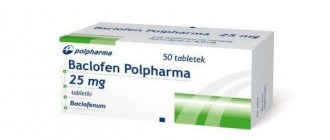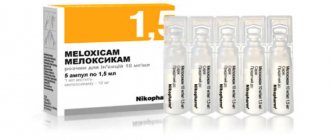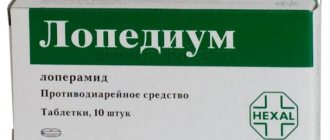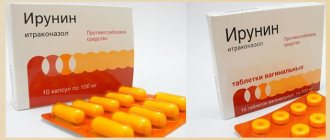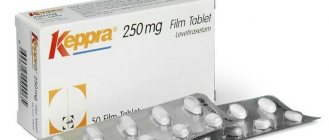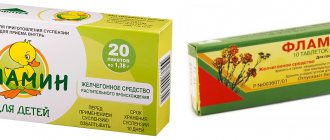When the joints hurt, or the resulting injuries bring discomfort and pain, the doctor prescribes Arcoxia. This is an antirheumatic, non-steroidal anti-inflammatory drug that is used to treat patients with diseases of the musculoskeletal system accompanied by pain. Arcoxia is available in the form of tablets with dosages of the active substance etoricoxib 30 mg, 60 mg, 90 mg and 120 mg.
Figure 1 - Arcoxia with different types of dosage
Contraindications
According to clinical studies, the following contraindications have been identified:
- tendency to gastrointestinal bleeding;
- cerebrovascular bleeding;
- individual intolerance to the components of the drug;
- bronchial asthma;
- polyposis of the nose or sinuses in the acute stage and frequent relapses;
- intolerance to NSAIDs;
- ulcers, erosions and perforations of the gastrointestinal tract;
- intestinal inflammation;
- kidney disease in progress;
- hyperkalemia;
- blood diseases caused by bleeding disorders (hemophilia);
- severe liver failure;
- liver diseases;
- chronic renal failure;
- pregnancy and breastfeeding;
- children under 16 years of age;
- period after surgery associated with coronary artery bypass grafting;
- peripheral arterial disease;
- blood pressure over 140/90 Hg;
- cerebrovascular diseases;
- lactase intolerance, lactase deficiency.
Doses and method of administration of Arcoxia
Figure 2 - The dosage of Arcoxia is prescribed by the doctor himself
Arcoxia is prescribed only by the attending physician. He can correctly calculate the dosage and risks for the patient. Take the medicine one tablet once a day, regardless of meals. The course of treatment should not exceed 8 days.
- for osteoarthritis: 1 tablet 30 or 60 mg per day, depending on the severity of symptoms;
- for rheumatoid arthritis and ankylosing spondylitis: 1 tablet 90 mg per day;
- for acute gouty arthritis: one 120 mg tablet per day. The duration of therapy is no more than 8 days;
- for acute pain (including after dental surgery): 1 tablet 90 or 120 mg, depending on the severity of the pain syndrome;
- for chronic pain: 1 tablet 60 mg.
Pharmacokinetics
Suction
After oral administration, it is quickly absorbed from the gastrointestinal tract. Bioavailability when taken orally is about 100%. After taking the drug by adults on an empty stomach at a dose of 120 mg, Cmax is 3.6 mcg/ml, the time to reach Cmax is 1 hour after administration.
Food intake does not have a significant effect on the severity and rate of absorption of etoricoxib when taken at a dose of 120 mg. At the same time, there is a decrease in Cmax values by 36% and an increase in Tmax for 2 hours.
Taking antacids does not affect the pharmacokinetics of the drug.
Distribution
The geometric mean AUC0-24 was 37.8 µg x h/ml. The pharmacokinetics of etoricoxib within therapeutic doses is linear.
Plasma protein binding exceeds 92%. Vd at equilibrium is about 120 l. Etoricoxib penetrates the placental and blood-brain barrier.
Metabolism
Intensively metabolized in the liver, with the participation of the cytochrome P450 isoenzyme (CYP) and the formation of 6-hydroxymethyl etoricoxib. Five metabolites of etoricoxib were discovered, the main ones being 6-hydroxymethyl-etoricoxib and its derivative, 6-carboxy-acetyl-etoricoxib. The main metabolites do not affect COX-1 and are completely inactive or have little activity against COX-2.
Removal
Etoricoxib is excreted as metabolites by the kidneys. Less than 1% of the drug is excreted unchanged in the urine.
With a single intravenous administration of a radiolabeled drug containing etoricoxib at a dose of 25 mg to healthy volunteers, it was demonstrated that 70% of the drug was excreted through the kidneys, 20% through the intestines, mainly in the form of metabolites. Less than 2% was found unchanged.
The equilibrium state is achieved after 7 days with a daily dose of 120 mg, with a cumulation coefficient of about 2, which corresponds to T1/2 - about 22 hours. Plasma clearance is approximately 50 ml/min.
Pharmacokinetics in special clinical situations
There are no pharmacokinetic differences between men and women.
Pharmacokinetics in the elderly (65 years and older) are comparable to those in the young, and there is no need to adjust the dose of the drug in the elderly.
Racial differences do not affect the pharmacokinetic parameters of etoricoxib.
In patients with minor liver dysfunction (5-6 points on the Child-Pugh scale), a single dose of etoricoxib at a dose of 60 mg/day was accompanied by an increase in AUC by 16% compared to healthy individuals.
In patients with moderate liver dysfunction (7-9 points on the Child-Pugh scale) taking the drug at a dose of 60 mg every other day, the AUC value was the same as in healthy individuals taking the drug daily at the same dose.
Data from clinical and pharmacokinetic studies in patients with severe liver dysfunction (more than 9 points on the Child-Pugh scale) are not available.
The pharmacokinetic parameters of a single dose of etoricoxib 120 mg in patients with moderate to severe renal failure and end-stage chronic renal failure (ESRD) on hemodialysis did not differ significantly from those in healthy individuals. Hemodialysis had little effect on excretion (dialysis clearance - about 50 ml/min).
The pharmacokinetic parameters of etoricoxib have not been studied in children under 12 years of age. In comparative pharmacokinetic studies, comparable data were obtained when using etoricoxib in a group of adolescents (from 12 to 17 years old) with a body weight of 40-60 kg at a dose of 60 mg/day, in a similar age group and with a body weight of more than 60 kg - 90 mg/day , and in adults when taking 90 mg/day.
Side effects when taking Arcoxia
Figure 3 - Vomiting and nausea - side effects when taking Arcoxia
Like any drug, Arcoxia has a number of side effects when taken. Well, the list is impressive.
- epigastric pain;
- nausea, vomiting;
- diarrhea;
- dyspepsia;
- flatulence;
- bloating;
- belching;
- increased peristalsis;
- constipation;
- dryness of the oral mucosa;
- gastritis;
- ulcer of the mucous membrane of the stomach or duodenum;
- irritable bowel syndrome;
- esophagitis;
- ulcers of the oral mucosa;
- gastrointestinal ulcers (with bleeding or perforation);
- headache;
- dizziness;
- weakness;
- taste disturbance;
- drowsiness;
- sleep disorders;
- sensitivity disorders, incl. paresthesia/hyperesthesia;
- anxiety;
- depression;
- hallucinations;
- confusion;
- blurred vision;
- conjunctivitis;
- noise in ears;
- renal failure, usually reversible when the drug is discontinued;
- anaphylactic/anaphylactoid reactions, including a marked decrease in blood pressure and shock;
- heartbeat;
- increased blood pressure;
- tides;
- cerebrovascular accident;
- atrial fibrillation;
- congestive heart failure;
- hypertensive crisis;
- cough;
- dyspnea;
- nose bleed;
- bronchospasm;
- swelling of the face;
- skin itching;
- rash;
- hives;
- Stevens-Johnson syndrome;
- Lyell's syndrome;
- infections of the upper respiratory tract, urinary tract;
- muscle cramps;
- arthralgia;
- myalgia;
- swelling, fluid retention;
- changes in appetite;
- weight gain;
- leukopenia, thrombocytopenia;
- flu-like syndrome;
- chest pain.
Interaction with other drugs and alcohol
The use of Arcoxia does not eliminate the need to use other groups of medications, including antibiotics. But it's worth remembering the following:
- before combining Arcoxia and other drugs, you should consult your doctor;
- Arcoxia enhances the effectiveness of anticoagulants and antiplatelet agents, lowering prothrombin time;
- reduces the effect of diuretics and antihypertensive drugs;
- if acetylsalicylic acid is used, then as a prevention of cardiovascular complications. But you should not get carried away, as gastric bleeding may be provoked;
- the compatibility of cyclosporines with Arcoxia enhances its nephrotoxic effect.
Arcoxia and Kagocel
Kagocel is an antiviral drug. Judging by the instructions for both Arcoxia and Kagocel, taking these drugs together is possible. Arcoxia can coexist with drugs of this pharmacological group, and Kagocel combines well with other antiviral drugs, immunomodulators, antibiotics and other drugs. But the combination of such means should be carried out by a qualified specialist. Independence in this matter and an arbitrary combination of medications can lead to negative consequences, poisoning and even death.
Arcoxia and alcohol
Due to the fact that the instructions do not directly prohibit combination with alcohol, the question of their compatibility naturally arises. The simultaneous use of non-steroidal anti-inflammatory drugs in combination with alcohol is undesirable due to the possible occurrence and intensification of side effects. Migraine, weakness, nausea and vomiting, allergic reactions, diarrhea, disorientation in space, kidney failure, increased load on the liver, etc. Not the most pleasant set, right? Arcoxia in combination with alcohol leads to deterioration of the gastrointestinal tract and poisoning and internal bleeding. The risk of myocardial infarction, increased blood pressure, and cardiovascular failure cannot be excluded. But there are still a couple of tips. You can start drinking alcohol only after the drug has been completely eliminated from the body, which means 24 hours after taking the last pill. This also works the other way around: you should not drink alcohol the day before taking Arcoxia.
special instructions
Taking the drug Arcoxia® requires careful monitoring of blood pressure. When prescribing the drug, all patients should have their blood pressure monitored during the first two weeks of treatment and periodically thereafter.
Liver and kidney function tests should also be regularly monitored.
If the level of liver transaminases increases by 3 times or more relative to ULN, the drug should be discontinued.
Given the increasing risk of developing undesirable effects with increasing duration of use, it is necessary to periodically evaluate the need to continue taking the drug and the possibility of reducing the dose.
The drug should not be used simultaneously with other NSAIDs.
The shell of Arcoxia® contains lactose in small quantities, which should be taken into account when prescribing the drug to patients with lactase deficiency.
Impact on the ability to drive vehicles and operate machinery
During the treatment period, care must be taken when driving vehicles and engaging in other potentially hazardous activities that require increased concentration and speed of psychomotor reactions. Patients who have experienced episodes of dizziness, drowsiness or weakness should refrain from activities requiring concentration.
Analogs
Figure 5 - Analogues of the drug Arcoxia
To date, the drug Arcoxia has no analogues in the literal sense of the word, so if a replacement is necessary, you should consult your doctor.
Let us recall that Arcoxia is a selective nonsteroidal anti-inflammatory drug (NSAID) that suppresses the production of prostaglandins, which are mediators of inflammation. NSAIDs reduce fever, suppress pain and relieve inflammation and are used for symptomatic therapy. Although Arcoxia and the medications described below are part of the same pharmacological group, they have different active substances (to which the patient may have hypersensitivity), release forms, price, negative effects on the body, sometimes contraindications and side effects. Let's try to figure out what the pharmacy counter offers us. Remember that only a doctor can prescribe the appropriate drug!
Arcoxia or Movalis
Movalis is a drug whose active ingredient is meloxicam. Arcoxia and Movalis have similar indications and algorithm of action, but the release forms and negative effects on the body are different. Arcoxia is available in the form of tablets, and Movalis in the form of tablets, injection solution, suspension, and rectal suppositories. Thus, Arcoxia has a negative effect on the cardiovascular system, and Movalis has a negative effect on the gastric mucosa and gastrointestinal tract as a whole, causing perforations and possible bleeding. For endocrinological disorders (diabetes) and for elderly people, Arcoxia is indicated, since these parameters are on the list of contraindications for Movalis.
Arcoxia or Nimesil
The active substance of Nimesil is nimesulide. It, like Arcoxia, blocks the activity of COX 2, which makes it possible to achieve an analgesic effect and be used for the treatment of inflammatory and degenerative diseases of the musculoskeletal system. But Nimesil has an additional area of application: it is used in the treatment of infectious and inflammatory processes of the respiratory system. Reduces temperature, relieves pain and inflammation.
The release form of Nimesil is medicinal granules (powder), which are diluted in a glass of warm water.
Arcoxia or Aertal
Indications for use, contraindications and algorithm of action are identical to Arcoxia. The active ingredient in Aertal is aceclofenac. Release form: tablets, cream for external use and powder, from which a suspension is first prepared before use. The main negative effects that patients experience when taking Aertal are: nausea, vomiting, epigastric pain, intestinal colic, dyspepsia, flatulence, anorexia, constipation.
Arcoxia or Dexalgin
The active substance in Dexalgin is dexketoprofen, which, it should be noted right away, often causes allergies. It is sold in tablets and injections (administered intramuscularly) and taken throughout the day (tablets 2-6 times, injections 2-3 times). Otherwise, this is a NSAID with similar indications, action and contraindications.
Arcoxia or Diclofenac
Diclofenac is a very effective NSAID. It is not for nothing that doctors use it when they need to quickly relieve pain in the postoperative and post-traumatic period. Also, this remedy in the form of a suppository helps well with migraines. But, alas, the effect on the human body is negative. Long-term use of the drug affects not only the gastric mucosa, but also the cardiovascular system.
Arcoxia or Costarox
Kostarox is a generic, that is, a drug with the same active ingredient as the original (etoricoxib 90), however, it has not passed all stages of clinical trials. Generic status makes the drug cheaper, often without loss of pharmacological properties. Note that Kostarox, unlike Arcoxia, is available in only one dosage - 90 mg.
pharmachologic effect
NSAIDs. A selective COX-2 inhibitor, in therapeutic concentrations, blocks the formation of prostaglandins and has anti-inflammatory, analgesic and antipyretic effects. Selective inhibition of COX-2 is accompanied by a decrease in the severity of clinical symptoms associated with the inflammatory process, while there is no effect on platelet function and the gastrointestinal mucosa.
Etoricoxib has a dose-dependent effect of inhibiting COX-2, without affecting COX-1 when used in a daily dose of up to 150 mg. Arcoxia® does not affect the production of prostaglandins in the gastric mucosa and the bleeding time. In the studies conducted, there was no decrease in arachidonic acid levels and platelet aggregation caused by collagen.
